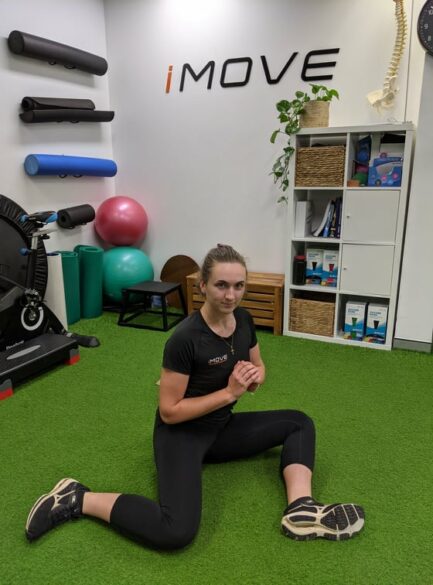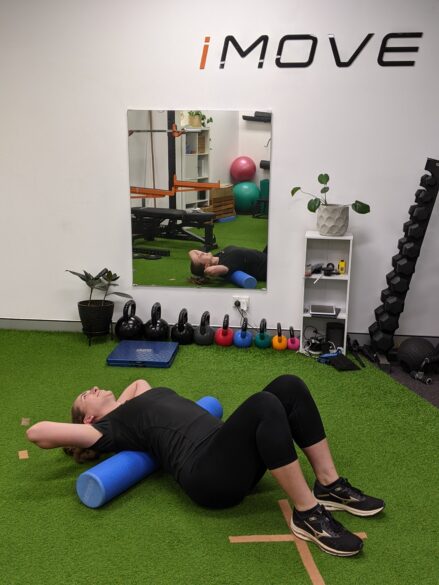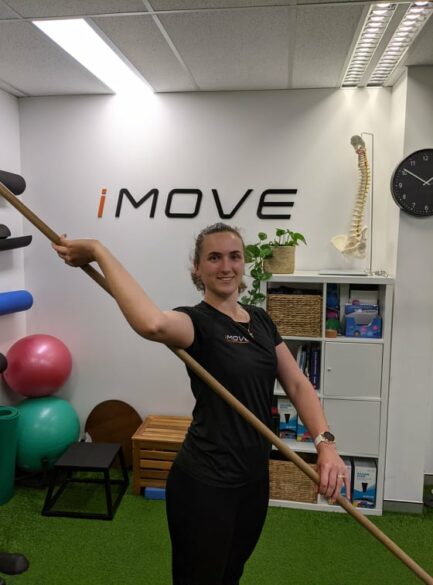Have you returned to the gym after an extended break? We spoke to iMove’s Miranda-based physiotherapist, Rachel Whiteside about how to return to form without injury.
With gyms open again, everyone is keen to get back into training where they left off, however, after over three months stuck at home (and let’s be honest, those home workouts haven’t been happening as often as we planned) jumping back in where you left off is a recipe for injury.
What’s happened to our bodies during lockdown?
If you haven’t been keeping up training at your normal intensity, your muscles, tendons and even your bones will have gotten weaker and you will have lost fitness. The old rhetoric ‘Use it or lose it’ definitely rings true; fitness will start to drop within a week of not training and muscle weakness can set in within a month. After three months, your body’s going to feel a whole lot different than it did pre-lockdown.
With less movement and more sitting, you will also be stiffer than pre-lockdown, so you might struggle to get down into a deep squat or to get weights all the way overhead. A great way to combat this is to start on some mobility work through the back, shoulders and hips before you get back into the gym. Incorporating some mobility work into your warm-up is also a fantastic idea! You can try:
1. Seated hip rotations

2. Foam roller back bends

3. Shoulder mobility

Coordination can also suffer during lockdown. So, if you’re going back to doing complicated movements in a class or skill-based lifts, you’ll need to decrease your weights more than you would with simple exercises, as your body will have to learn how to fine-tune the movements again. We would recommend going really lightly for a few sessions to make sure you’re nailing your form before loading up.
A brief guide to returning to exercise without injury
Whether it’s weightlifting or F45, there are a few simple principles we can follow to reduce the chance of developing a niggle or getting injured in the first few months of resuming normal training.
Modify your weights
A good place to start is 50-60% of the weights you used to lift. This will give your body a chance to get used to doing the exercises again before you really start to challenge your muscle strength.
Increase loads by 10% a week – this might seem really small, but it will only take five weeks to get back to your pre-lockdown weights, which is a small price to pay to avoid an injury. This will give your body, muscles and tendons time to adapt as you increase your weights and prevent overload injuries.
Take more rest days
If you were working out 6 days a week pre-lockdown, maybe start back going every other day and add a day every 2 weeks until you’re back at 6 days a week.
Sleep
Recovery is key and the easiest way to up your recovery game is to get your 8 hours a night. There’s lots of evidence to show that less than 7 hours increases your chances of getting injured by about 50%.
Listen to your body
If you’re feeling tired, sore or like your body just doesn’t want to train today, that’s your body telling you it needs more time to recover. In the first few months of getting back into training, it’s important to listen to these signs so that you don’t push your body too far and end up injured.
Get any niggles checked out early
A small niggle will side-line you for less time than an issue that’s gotten worse over the course of a few weeks and is interfering with daily life. If you’re concerned about any aches and pains getting back into training, come in and see us at iMove Physiotherapy Miranda so we can get you back on track ASAP.
Best of luck with your fitness goals! Visit iMove Physiotherapy Miranda for further advice regarding training, injury prevention and avoidance and for more information on all your physio needs.
